Print combats power cuts in Tamil Nadu
The print growth in Tamil Nadu is lifting from its lows, but will it be constrained due to the 16-hour power cuts, unprecedented price hikes and infrastructural bottleneck.
05 Sep 2013 | By Ramu Ramanathan
The situation is grim. Sivakasi has been witnessing 14- to 16-hour power cuts. This has resulted in total print production being reduced by 50%. A Balasubramanian, past president of Sivakasi Master Printers’ Association, says, “Print units are unable to operate due to lack of power. And Sivakasi’s print industry has taken a blow due to the power crisis in the state.”
When PrintWeek India was in Sivakasi, two print firms, Lovely Offset Printers and Sel Jegat were finalising solar energy projects in their factory premises. Lovely has 100KW capabilities, while Sel Jegat can generate 65KW.
K Selvakumar, director of Lovely, says, “We are embarking on the solar path in a small way. The issue is effective implementation. If we can achieve it, we will enforce provisions such as solar power purchase obligation, which mandates assured usage of renewable energy.”
The state government has announced the Tamil Nadu State Solar Energy Policy 2012 which targets establishment of 3,000MV of solar power generation by 2015. This provides generation-based incentives for roof-top systems and mandates 6% minimum purchase obligation from 2014, beginning with 3% next year, and also provides a package of incentives for solar equipment manufacturers.
Selvakumar and V S Raveendran of Sel Jegat feel solar power is costly but can be competitive compared with other sources of power.
Tamil Nadu is trying to generate electricity through wind energy. In fact the month of May has been better for Sivakasi because of power from the wind mills in Nagercoil. But Balasubramanian feels the potential of “wind power is under-utilised in Tamil Nadu”. The World Institute of Sustainability Energy’s study in Tamil Nadu indicated that just on wasteland alone over 35,000MW of wind power generation could be established against 6,000MW presently generated.
Balasubramanian points how things were dire in 2012. He says, “This warranted that owners of over 2,000 small and micro-industries staged a protest in October 2012 for one day. He adds, “The owners and employees of the units stopped production for a day as part of the protest. We besieged the TNEB office there and raised slogans demanding regular supply. Print units suffered a huge loss due to power cuts.”
The TNEB offered to look into the matter. So far there has been no progress.
Raveendran of Sel Jegat, states, “Ours is a small experiment with solar energy. We can light up our factory with it.”
It’s a start. If it takes off then Tamil Nadu’s target of establishing 1,000MW of solar power generation a year for three years is a viable target.
How Tamil Nadu combats power cuts
72 CTP systems have been installed in Rest of Tamil Nadu, which excludes Chennai. Thermal and violet have steadied but UV-setters is gaining in momentum. These numbers are expected to get a boost what with sheetfed presses being added in two-tier and three-tier cities like Salem and Madurai. As per market reports, four firms in Sivakasi are on the verge of inking a deal with Monotech for Basysprint UV platesetters.
As per a survey by PrintWeek India there are 25 BasysPrint systems in Rest of Tamil Nadu (also known as Greater Tamil Nadu); and 3–4 Amsky systems.
Today, 80% of the plate requirement is provided by exclusive CTP service bureaus. 20% of the CTP systems are in-house.
In Sivakasi, both Lovely and Safire, who deal with premium clientele, are the biggest thermal CTP consumers with 2,500 plates/month. SFA, Srinivas Fine Prints Standard and Gopsons are other big consumers in Sivakasi.
But a large section of the market is dominated by low cost plate production. Two years ago, when I visited Sivakasi it was dominated by 26,000 sq/metres of wipe-on plates. This method continues to be prevalent, what with the cost of making a single wipe-on plate equal to Rs 30–35. This includes: laser print, electricity and manpower. This means a four-colour set (or three-colour set, as is the norm among some print firms) can be procured at Rs 400–600 including margins and hidden costs.
A CTP bureau head I met in Sivakasi said, “Some printers re-grain the plate 10 times.” The reasons are: power cuts have made them spend Rs 13 (minimum) or Rs 23 (maximum) per unit on a diesel gen-set; as opposed to Rs 6 for regular power.
With the power cuts ranging from 14 to 16 hours, print has become rather expensive, with a CTP plate set costing Rs 1,400 or Rs 1,650 (at 2,400 dpi); as opposed to Rs 600 for wipe-ons. Most of the printers are cutting down their costs. They prefer to go to trade shops to get these low-cost imaged plates.
A Balasubramanian says: “The work has picked up. And the in-bound job flow has not reduced.”
A typical service bureau in Sivakasi, or in any of the print clusters in Coimbatore or Madurai, has 20 customers, and produces 60–70 plates in a shift. A healthy number is 180–200 plates per day.
In spite of the power problem and the slowdown in the market, the plate consumption for thermal and violet CTP has grown by 7–8%. The Sivakasi Master Printers’ Association attributes this to natural growth and remains “very optimistic” about the future.
Print in Madurai, Trichy and Mannargudi increase
For long, the Tamil Nadu print industry has been defined by Chennai, Sivakasi and Coimbatore. In the past two years, the sheetfed numbers have been picking up in Madurai, Karur, Trichy and Mannargudi.
Trichy, which has the fourth largest municipal corporation and the fourth largest urban agglomeration in the state, has seen the installations of five four-colour presses. Meanwhile, Mannargudi, which is a town in the Tiruvarur district, has seen the installation of two four-colour presses. Likewise, there are Salem and Karur which boast of print firms like Monicka and Design Plus Plus.
Madurai, the third largest city and the second largest municipal corporation in Tamil Nadu has five four-colour second-hand presses. These include, a Mitsubishi Diamond (20x30in) at Vinayaka, and a Heidelberg SM 52, which has been procured by Olympic Prints who are setting up a new three-storey unit. Its owner Mohamed Rafeek Raja, a marine engineer, is changing the game, and looking “to convert digital to offset by focussing on tag printing.”
Also there are two emerging players in the notebook segment: Vimala Paper Company and Pixel BookPrint who fulfil the book requirement in the state. Most of this is job work, but the demand is expected to grow. Today, Tamil Nadu has become the first state in the country to achieve the target fixed for the Saakshar Bharat programme, by producing 17.26 lakh neo-literates. This translates into a literacy rate of 80.3%. Saakshar Bharat is focussed on women’s literacy, which has got a major boost after the programme was launched in 2009.
N Ananth of Grafik Enterprises, who confirmed the bullishness in the heartland of Tamil Nadu, states, “Today Tamil Nadu has two central universities, 19 state universities and close to 30 deemed universities.”
He adds, “The influx of more than 15 presses has meant installations of nine new CTP systems. This include a mix of Alinte (violet), Amsky (CTCP), Basysprint (CTCP), Viostar (violet) and Suprasetter (thermal).
Ananth says, “Most of the print firms prefer CTP to be in-house but there are service bureaus like Suve Graphics in Trichy and Olympic Prints in Madurai who are flourishing.” Ananth who is a reputed dealer for TechNova in the region added, “CTCP plate consumption is growing; even as violet and thermal are holding a steady position.”
Mohamed Rafeek Raja oversees a busy service bureau in a bustling bylane of Madurai. The other important bureaus in Madurai are Dolphin and Beejay. The Olympic numbers look healthy 250–300 plates per day. Most of them catering to the Madurai, Karur, Trichy, Nagercoil and Virudhunagar markets. One intriguing factoid is: 60% of the plates that he outputs are for three-colour jobs. Raja stated: most printers prefer not to print black. He says, “This is the norm in these parts, as a cost-cutting exercise.” The other trivia about Olympic’s nifty operations is: the plate operation is handled by women.
Ananth concluded, “A majority of the commercial market is dominated by wedding cards and invitation cards. With the advent of Small Scale Industries (SSI) in 1991, the industrialisation has increased. This has boosted print consumption.”
With print cluster programmes coming into being in Madurai, Salem and Krishnagiri in addition to the one at Sivakasi, the power of print could be further enhanced.


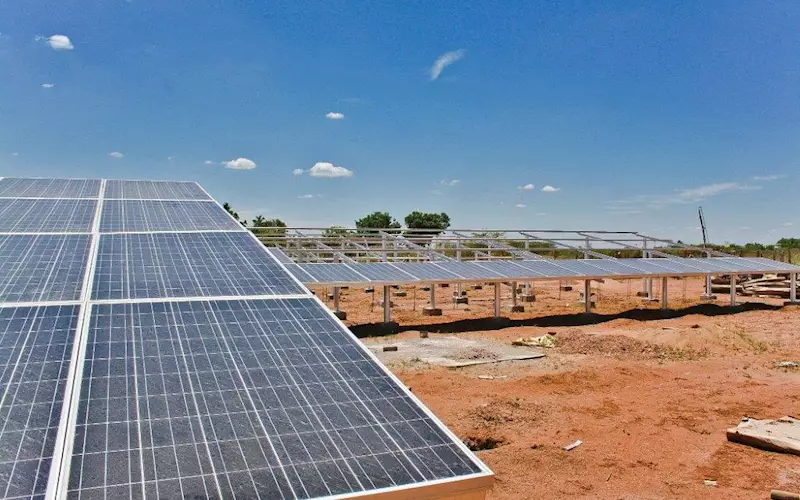


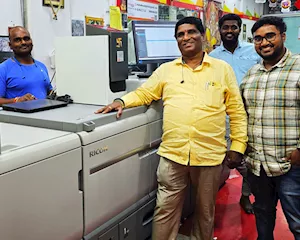
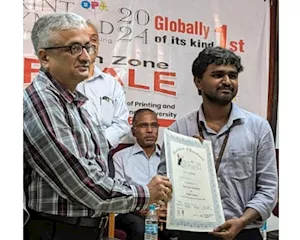

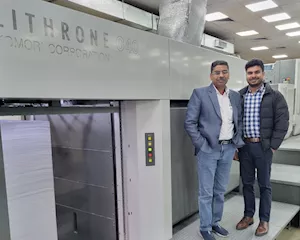
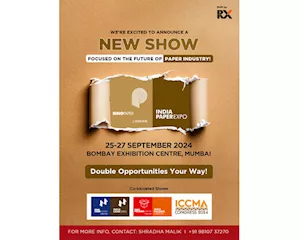

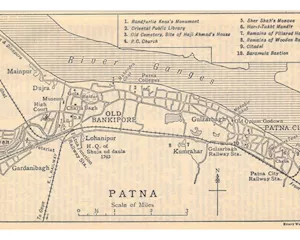
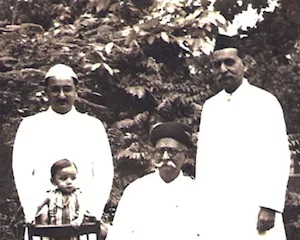
 See All
See All